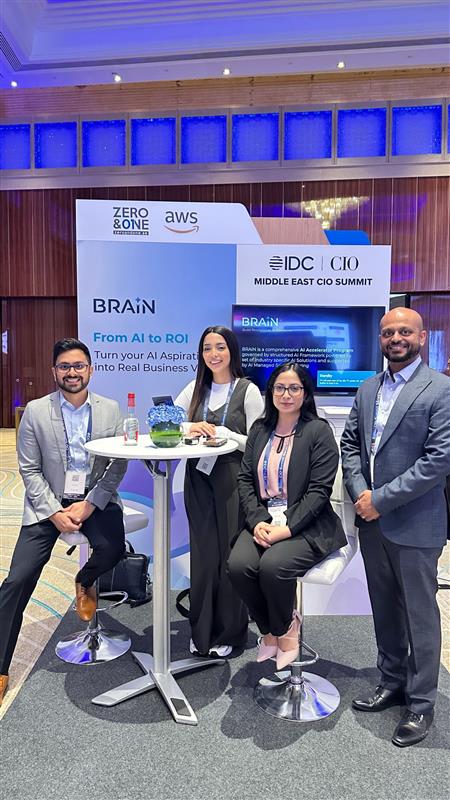Artificial Intelligence (AI) has transformed our world in remarkable ways, from automating routine tasks to revolutionizing creative fields. To appreciate the depth and breadth of AI's impact, it's essential to trace its evolution from its nascent beginnings in the 1950s to the groundbreaking advancements we see today, particularly in Generative AI.
The journey of AI began in the mid-20th century when researchers first conceptualized the idea of creating machines capable of emulating human intelligence. Early AI developments faced significant hurdles, primarily due to limited computational resources and data availability. Despite these challenges, the foundational work laid the groundwork for future advancements, paving the way for various specialized technologies.
To understand how AI functions, it's helpful to explore its key components:
- ◉ Machine Learning (ML): A subset of AI that enables systems to learn from data. Key aspects include training data, feature extraction, model selection, the learning process, and generalization. ML can be categorized into supervised learning (using labeled data) and unsupervised learning (discovering patterns without explicit labels).
- ◉ Deep Learning (DL): A specialized form of ML that uses neural networks with multiple layers. DL excels in areas like image and speech recognition and natural language processing. Key components include artificial neural networks, backpropagation, and deep neural networks.
- ◉ Generative AI: Generative artificial intelligence (Generative AI, GenAI) refers to AI systems capable of creating original content—such as text, images, video, audio, or software code—in response to prompts. These models learn patterns from their training data and generate new data with similar characteristics
Fast forward to the 1990s and 2000s, Machine Learning (ML) emerged as a critical subset of AI.ML accelerated the evolution and improvement of AI and created the main foundation of all future concepts. ML involves algorithms that enable systems to learn from data and make decisions or predictions without being explicitly programmed. By analyzing data, ML systems continuously improve their performance over time, marking a significant leap forward into the future of AI. To ensure an effective use of ML and guarantee more accurate results and predictions, the process of the execution should follow a predefined lifecycle.
A foundational step in any machine learning project is a deep understanding of the problem to be solved. A clear definition of the problem's purpose and objectives is crucial for guiding the entire life cycle and ensuring the solution aligns with the desired outcomes. So, two main points should be clearly studied and identified to make sure that we are generating the most accurate results of this process:
- ◉ Business Understanding: Clearly define the problem to be solved and the desired outcomes.
- ◉ Data Understanding: Acquire and explore the relevant data, assessing its quality and suitability.
Then, the lifecycle of the Machine Learning process kicks off as per the below:
-
Gathering Data: The data gathering phase is the initial step in the machine learning life cycle. Its goal is to identify and acquire relevant data-related problem from diverse sources, such as files, databases, the internet, or mobile devices. The quality and quantity of this data will significantly impact the accuracy and effectiveness of the subsequent modeling process. The steps of the data gathering includes:
- Identifying data sources: Locating relevant data repositories and determining their accessibility.
- Collecting data: Extracting data from these sources in a structured and efficient manner.
- Integrating data: Combining data from multiple sources into a unified dataset for analysis.
-
Data Preparation: After collecting data, we go through an important step called data preparation. This helps us understand the data we're working with—its characteristics, format, and quality. A better understanding of the data leads to better results.
-
Data wrangling: is the essential process of cleaning and transforming raw data into a usable format. Imagine it as tidying up a messy room: we clean the data, select which variables to use (like choosing toys), and reshape it for better analysis. Quality checks ensure our outcome is reliable. Just like a clean room leads to better playtime, well-wrangled data leads to more accurate insights. In real-world applications, collected data may have various issues, including:
- Missing Values
- Duplicate data
- Invalid data
- Noise
-
Data Analysis: In this step, our goal is to construct a machine learning model for data analysis, employing a variety of analytical techniques. We begin by identifying the problem type, selecting appropriate machine learning methods (such as classification, regression, cluster analysis, and association), and then building the model using preprocessed data. Finally, we evaluate the performance of the model. This phase includes the following steps:
- Selection of analytical techniques
- Building models
- Review the result
-
Train the Model: In the subsequent step, we focus on training the model. Our objective here is to enhance its performance, leading to better outcomes for the problem at hand. We achieve this by utilizing datasets to train the model using a variety of machine learning algorithms. Training is essential because it enables the model to comprehend diverse patterns, rules, and features.
-
Test the Model: After training our machine learning model on a specific dataset, the next step involves testing the model. During this phase, we assess the model's accuracy by providing it with a separate test dataset. The testing process determines the percentage accuracy of the model, aligning with the project or problem requirements.
-
Deployment: The final step in the machine learning life cycle is deployment, during which we integrate the model into a real-world system. If the model we've prepared yields accurate results according to our requirements and operates at an acceptable speed, we proceed with deploying it in the actual system. However, before deployment, we rigorously assess whether the model continues to improve its performance using available data.
Building upon the principles of ML, Deep Learning (DL) emerged as a specialized form of machine learning. Inspired by the structure of the human brain, DL uses ML methods based on Neural Networks with multiple layers to analyze complex patterns. This approach has revolutionized various fields, including image recognition, speech processing, and Natural Language Processing (NLP). DL models require substantial computational resources and extensive data, but their ability to process and understand intricate patterns has set them apart from earlier technologies.
Key components of DL
- ◉ Artificial Neural Networks (ANNs): ANNs are the foundation of deep learning. They consist of interconnected nodes (neurons) organized in layers (input, hidden, and output).
- ◉ Deep Neural Networks (DNNs): DNNs consist of an input layer, one or more hidden layers, and an output layer. The depth (number of hidden layers) distinguishes them from shallow networks. DNNs excel in various domains: image recognition, speech recognition, and more.
- ◉ Recurrent Neural Networks (RNNs): RNNs handle sequential data (e.g., time series, natural language). They maintain hidden states that capture context from previous inputs.
- ◉ Convolutional Neural Network (CNNs): CNNs use convolutional layers to automatically learn hierarchical features from input data. CNNs excel at image and video processing tasks and they are widely used for image classification, object detection, and segmentation.
Generative AI, which gained prominence in 2020, represents a transformative leap in AI technology. Unlike earlier AI models that focused on analyzing and predicting data, Generative AI creates novel content—such as text, images, music, and even code—by learning from existing data. This subset of AI leverages sophisticated algorithms and Large Language Models (LLMs) to generate original content, enabling new forms of creativity and innovation.
Generative AI takes AI to a new level by creating new, realistic content based on learned patterns. Core techniques in Generative AI include:
- ◉ Generative Adversarial Networks (GANs): Consist of two neural networks—the generator and the discriminator—working in opposition. The generator creates content, while the discriminator evaluates its authenticity. Over time, the generator produces increasingly realistic content, from stunning art to deep fake videos.
- ◉ Variational Autoencoders (VAEs): These models learn to encode data into a compressed representation and then decode it back to its original form. VAEs are used in tasks such as image generation, style transfer, and anomaly detection.
Generative AI takes AI to a new level by creating new, realistic content based on learned patterns. Core techniques in Generative AI include:
- ◉ Text Generation: Models like GPT (Generative Pre-trained Transformer) can generate coherent and contextually relevant text for chatbots, content creation, and more.
- ◉ Image Generation: Creating or modifying images, from realistic portrayals to artistic transformations.
- ◉ Music Composition: Generative models can compose music by learning from existing melodies and styles.
- ◉ Art and Design: Artists and designers use generative tools to explore new visual forms and aesthetics, blending creativity with computational power.
As technology continues to advance, AI's capabilities will expand further, with Generative AI leading the way in creative and innovative applications. However, this progress also brings challenges, including ethical considerations and the need for careful design and evaluation.
AI has come a long way since its theoretical inception in the 1950s, evolving through stages of Machine Learning, Deep Learning, and now Generative AI. Each advancement has built upon the last, shaping the way we interact with technology and opening new possibilities for the future. As we look ahead, the potential for AI to inspire creativity and drive innovation is boundless.
Book a meeting with our AI experts to explore how this cutting-edge technology can drive revenue and innovation for your organization.



